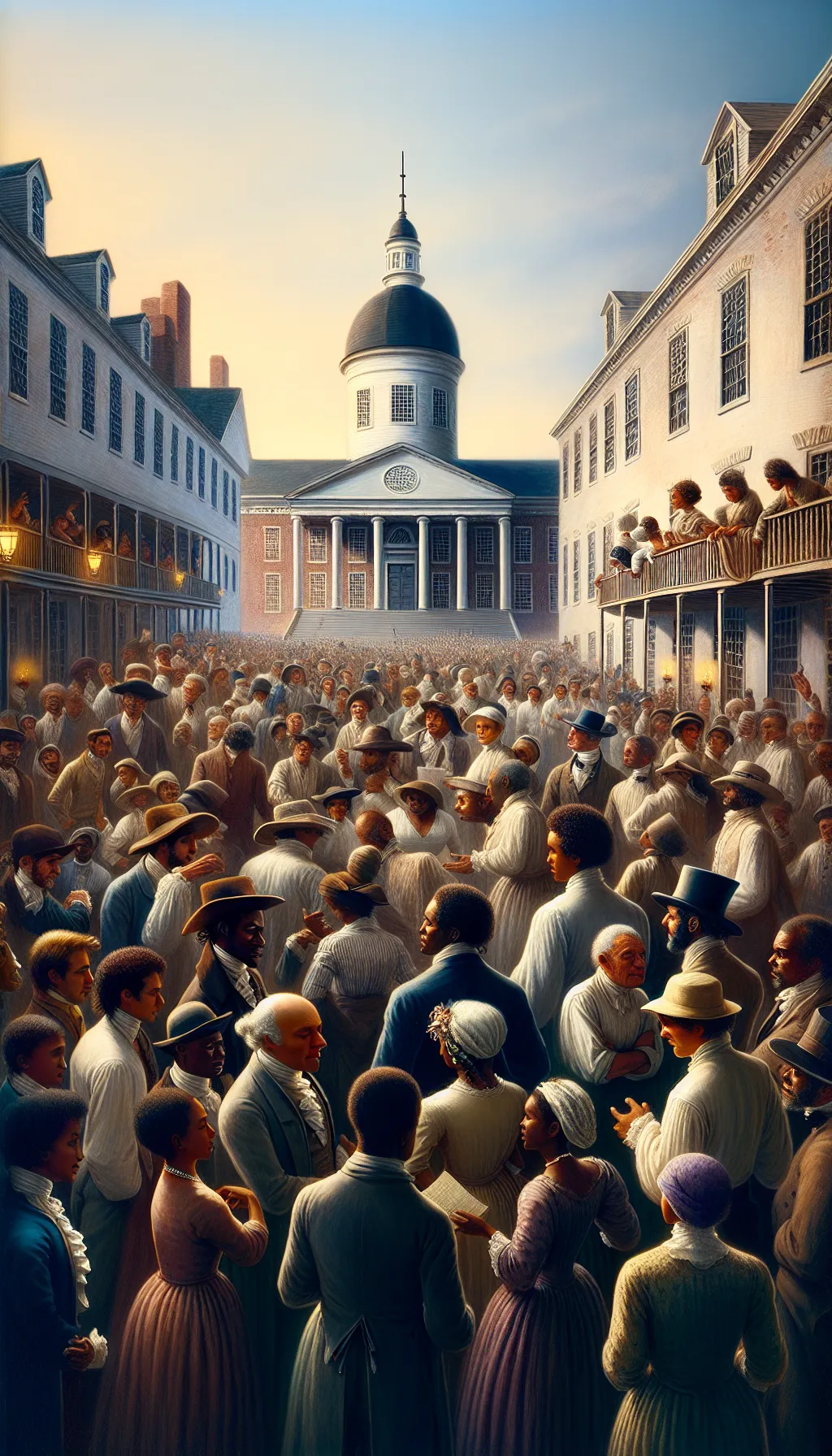United States – Maryland's Crucial but Not Decisive Step: April 28, 1788
TLDR;
- Event: On April 28, 1788, Maryland became the seventh state to ratify the United States Constitution, a pivotal moment in the document’s adoption process.
- Debate: The decision followed intense discussions between Federalists, who supported a stronger central government, and Anti-Federalists, who feared excessive federal power and the absence of a Bill of Rights.
- Significance: Maryland’s ratification was crucial but not decisive; the Constitution required nine states’ approval to become effective, with Virginia and New York’s subsequent ratifications being particularly influential.
- Legacy: This event underscored the delicate balance between federal authority and states’ rights, laying the groundwork for the Constitution’s eventual success and the formation of a more unified nation.
–
Story
The air was thick with anticipation in the bustling streets of Annapolis on April 28, 1788. Citizens gathered in clusters, their voices a mix of hope and apprehension. Inside the State House, the atmosphere was electric as Maryland’s delegates prepared to cast their votes on a document that promised to reshape the very fabric of their young nation—the United States Constitution.

The journey to this moment had been fraught with debate and division. The Articles of Confederation, the nation’s first governing document, had proven inadequate to many, though not all, leaving the fledgling United States teetering on the brink of chaos. A stronger, more cohesive framework was desperately needed, yet Anti-Federalists in Maryland and elsewhere argued passionately that the Articles could be amended rather than replaced.
Maryland, a state with its own internal struggles and diverse interests, stood at a crossroads. The decision to ratify the Constitution was not just a vote on paper; it was a commitment to a new vision of governance, one that balanced federal power with states’ rights, amidst fierce debates over the lack of a Bill of Rights.
As the votes were tallied, a sense of history in the making filled the room. Maryland’s ratification marked it as the seventh state to embrace the Constitution, an important but not yet decisive step toward the document’s ultimate adoption. The real tipping point would come later, with the ratifications of Virginia and New York, whose support was far more uncertain and politically crucial.
With Maryland’s bold step, the dream of a more perfect union edged closer to reality. The Constitution would soon become binding on the nine states that ratified it, with full national unity to follow as remaining states joined, thanks in part to the courage and foresight of those in Maryland who dared to believe in its promise.
–
| Would a different decision by Maryland have changed the course of American history? |